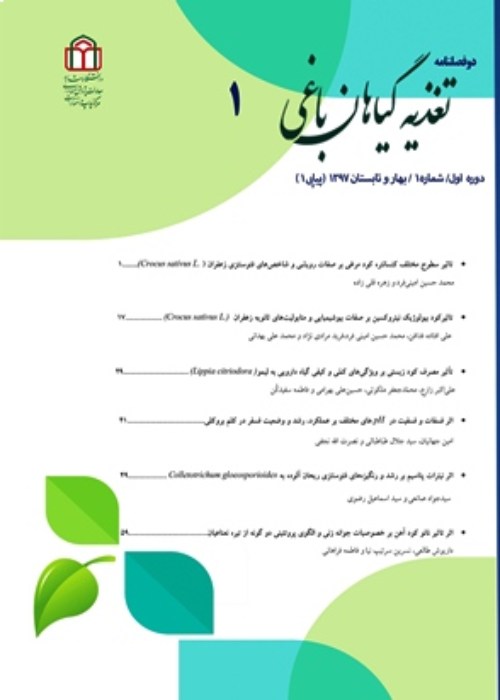The effect of foliar spray of sucrose and certain mineral nutrients on carbohydrates partitioning in radish (Rhaphunus sativus var. sativus)
Carbohydrate export from green leaves is a vital factor for growth and development of non-photosynthetic parts of plants, so both reinforcement of physiological sinks and assistance to carbohydrate translocation, can lead to more growth of physiological sources. Spray of exogenous sucrose has been evaluated in numerous studies and its positive influence was reported in various horticultural crops including tomato (Mashayekhi et al., 2016) and strawberry (Mendoza et al., 2005). In this experiment, it was aimed to manage sink-source relationships via exogenous sucrose spray and contributory elements for carbohydrate translocation comprising potassium (K), magnesium (Mg) and boron (B).
The experiment was carried out in factorial format based on completely randomized design in greenhouse conditions with 4 replications and 5 samples. The first factor was sucrose in two levels (control: S0 and 5 percent concentration: S1) and second factor was mineral nutrition in six levels consisting control (C), boric acid (BA), potassium sulfate (PS), potassium nitrate (PN), magnesium sulfate (MS) and magnesium nitrate (MN). An open hydroponic system was used for growing the radishes in cocopeat + perlite (1:1) medium culture. Biomass, photosynthetic pigments, photosynthesis parameters and carbohydrate allocation were determined to find the best treatment.
The highest fresh weight of aerial part of radish was recorded in S0PS treatment that was significantly more than the others. Treatment of S1MN ranked in second for fresh weight of aerial part. Surprisingly, all of the sucrose treatments caused more fresh and dry weight of aerial parts in comparison with control (S0C). Maximum dry weight of aerial parts was seen in S0PS that was not significantly different with S1MN. Interaction of sucrose and mineral nutrition was statistically significant in fresh weight of tuber but not in dry weight of it. The lowest fresh weight and diameter of radish tuber was observed in S0MS that was not different with S0C and S1BA significantly. The significant lowest transpiration rate recorded in S0C treatment showed stomatal limitation of control plants, so it can be considered an obstacle for normal photosynthesis which removed in treated plants. Chlorophyll a and carotenoids in the radishes treated by sucrose were significantly more than control plants. The treatment of S1MN showed the highest percentage of tuber carbohydrate, although its difference was not statistically significant with S1PS and S1KN.
According to the results, spray of potassium sulfate can be recommended to achieve more edible yield of radish. Foliar application of sucrose at the concentration of 5% caused photosynthetic limitations and increased non-photochemical quenching. Because of this reason, lower concentration should be tested in future researches to find the best concentration.
Phloem , Phloem sap , potassium , Magnesium , Boron
- حق عضویت دریافتی صرف حمایت از نشریات عضو و نگهداری، تکمیل و توسعه مگیران میشود.
- پرداخت حق اشتراک و دانلود مقالات اجازه بازنشر آن در سایر رسانههای چاپی و دیجیتال را به کاربر نمیدهد.


